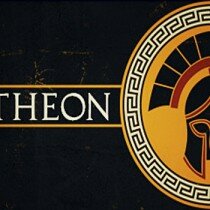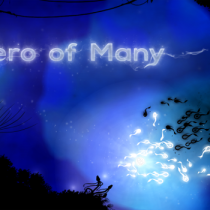Fallout 2 was, you will be shocked to learn, the sequel to the original Fallout and if there was one word to describe its relation to its predecessor, it would be ‘bigger’. In general game terms, Fallout 2 is virtually identical to the first game, but on an expanded scale.
Bigger and better, that’s usually the goal for any developer when working on a sequel to any game, especially a popular and acclaimed one. However, it rarely seems to pan out. Striking the ideal balance can be very difficult. Change too much and fans complain it’s not the game they expected. Change too little and people will complain of complacency. Pretty much any sequel you care to mention will most likely have had one or other of these accusations levelled at it at some point.
Fallout 2, however, is an example of a sequel that strikes that balance near perfectly. All of the best features of the game are kept in place, with the changes that are made to the game mechanics and the aesthetics, while being being fairly minor in the grand scheme of things, markedly improving upon the original.
The game mechanics, already solid in the first game, are refined and fleshed out in the sequel. Melee and unarmed combat no longer feels like a suicidal lottery, with late-game power fists and super-sledgehammers proving a viable combat option when combined with heavy armour. The decision to have melee weapons cost less action points to use is also a key factor in this. Targeting ratios also receive an overhaul, meaning that focussed shots to individual body parts now represent a genuine tactical option, dealing out added damage or crippled limbs at the cost of accuracy. I cannot quantify how much more variety and tactical scope this lends to combat, doing away with the more simplistic approach forced by its predecessor. The option of focussed targeting was available in the first game, but the accuracy ratios made this a false economy alone, let alone the fact that the benefits in terms of damage or effects were minimal when hits occurred. In addition, weaponry variety is increased, with many weapons having improved versions become available later in game, allowing development along weapon styles. This is most evident in melee weapons and perhaps speaks of a limited design quality in having Mach 2 versions of weapons, but it is limited enough in occurrence so as to be excusable.
Companion interaction is possibly the aspect that received the most significant overhaul, with far greater interaction available. In addition to the fairly vague range and weapon choice instructions of the first game, now you have a control panel for each companion, in which you can fine tune their combat behaviours, including telling them not to machine gun a guy when you’re in the way, a feature that should have won its designed a medal in my opinion, as peppered with holes as I was in the first game from friendly fire. You also now have the ability to use each companion’s special skills, be they medical knowledge to produce stimpacks, negotiation skills or the ability to make whisky (really). This helps to change the companions from hindrances to genuinely useful, though they still become fairly vulnerable late in the game, making their survival somewhat….problematic.
Perhaps the aspect of the first Fallout game that is most successfully retained in Fallout 2 is the setting and the narrative set therein. Fallout 2 takes these aspects of the first game and applies that ‘bigger’ concept I mentioned earlier on. Though the story is, in essence, the same in structure, with you heading out to rescue your village only to discover a force that threatens the whole wasteland and you fight it. While it can be argued this is lazy story writing, I would suggest that this is not the point. In the Fallout games the main story has only ever been an overarching framework encapsulating the world, an excuse for being in the world depicted and to explore it. The real narrative quality comes from the smaller sub-stories and side quests encountered throughout the world as you wander. Yes, the overall story is a basic one, but to judge the game on that is to dismiss around 98% of the story in the game. In a game where during your wanderings you can encounter a man with a tree growing out of his head, get forced into a hillbilly shotgun wedding, inadvertently become a slaver and buy a mine that’s infested with aliens, without even thinking about the main storyline, narrative involvement and variety is certainly not something to complain about. Indeed, on top of the volume of tasks and quests, the themes and overall mood of the story feels more gritty and grown up, with some genuinely dark depictions of the world. This is most definitely not a game for children, with murder, pornography, mafia gangs and cannibals all to be encountered, with racism, societal decay and local socio-economical politics as themes in various game areas lending it a much more complex and realistic air. In this darker atmosphere, your actions are lent even more consequence, with the grey nature of decisions and actions emphasised, making the traditional dichotomy of good and evil paths feel somewhat naive.
Fallout 2 is, in many ways, an example of precisely what a sequel should be. It takes what was good from the original and builds upon it while addressing the problems with the first. The core mechanics of combat are significantly improved without being revolutionised and the weakest aspect (the near useless companions) are rectified. While these are important aspects, though, it is the retention of the tone and narrative quality that is at the core of Fallout 2’s value as an effective sequel. This maintains continuity from the first game, while increasing its immersion and intrigue. Had all the other aspects of the game been in place, but without the competence of the depiction of the game world, the whole thing would have fallen down. In many games, especially RPGs, poor gameplay can be hidden to some extent by good story, whereas a poor story will often drag down a game with otherwise good gameplay.
Now and again a game comes along that marries great gameplay with great narrative and when it does you get games like Fallout and Fallout 2, games that are fun to play and genuinely interesting into the bargain. Both games serve as an example that no matter what level of technology or graphics available, nothing is more key to a good game than implementation. This is why games from previous gaming generations/eras are still loved today; their quality endures beyond their graphical appeal and show that a good game will always be a good game, no matter its age. Sadly, in this modern era, where graphical quality is often paramount, this example is often ignored.
© 2012 – 2014, zero1gaming.com. All rights reserved. On republishing this article your must provide a link to this original post
About Paul Izod
Paul Izod is a lifelong gamer. Since he was old enough to tap at his Dad's PC's keyboard he's been a gamer. Dedicated and often opinionated, you can be sure he'll always have something interesting to say about the subject at hand. Find him on Twitter at or or email him at
•




